When I first sat down to play the Final Fantasy VII Rebirth TGS demo in September 2023, the first thing that stood out to me was how much work Square Enix put into fleshing out the game’s characters. The Synergy ability, in particular, was a highlight, as it really added a lot of depth to the character’s personalities. Cloud using Aerith’s magic to create a spectacular fireworks display of damage was both an epic cinematic attack in combat and a neat narrative device that says much about their bond.
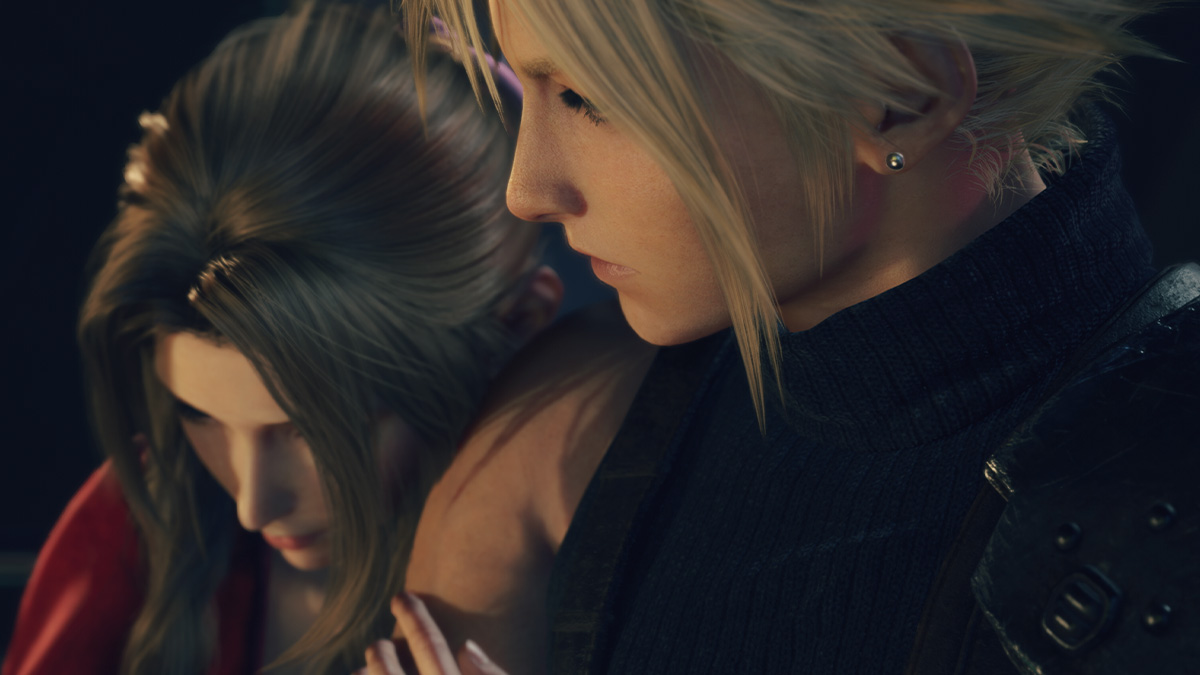
In January 2024, I played the first five hours of Final Fantasy VII Rebirth in the lead-up to its launch in February. I can say that the game goes even further than I expected to breathe new life into these beloved characters of the 1997 classic. This is evident from the game’s opening hours, which is oozing with personality. In Chapter 1, we get to play a flashback of a pivotal moment between Cloud and Sephiroth from five years ago. However, as we progress through the story, Cloud, in real-time, narrates the events while the rest of the group occasionally chimes in with their own commentary.
What is really neat about this narrative decision is that players are given choices in the campaign, which then reflect on the campfire story Cloud is telling. For example, there is a hilarious moment where Cloud reveals that he went into Tifa’s room, and you can choose to have him say that he looked into her closet. Based on the decisions you make, the group will either scold Cloud or praise him. This design choice not only allows players to experience the story how they want to but it also creates these dynamic moments between the group that add a lot to their relationships. And I mean, it will never not be funny when Barret chews out Cloud for making the wrong decisions.
There are a surprising amount of these moments where players are given multiple-choice decisions. I won’t go into detail about all of them, as I want to leave that as a surprise to players. However, since Cloud is retelling a story from his point of view, there is a lot of room for players to improvise the story with their decisions. The flashback narrative also allows Square Enix to really world-build by creating these little details that say a lot about the characters, especially with how they react to Cloud’s perspective.
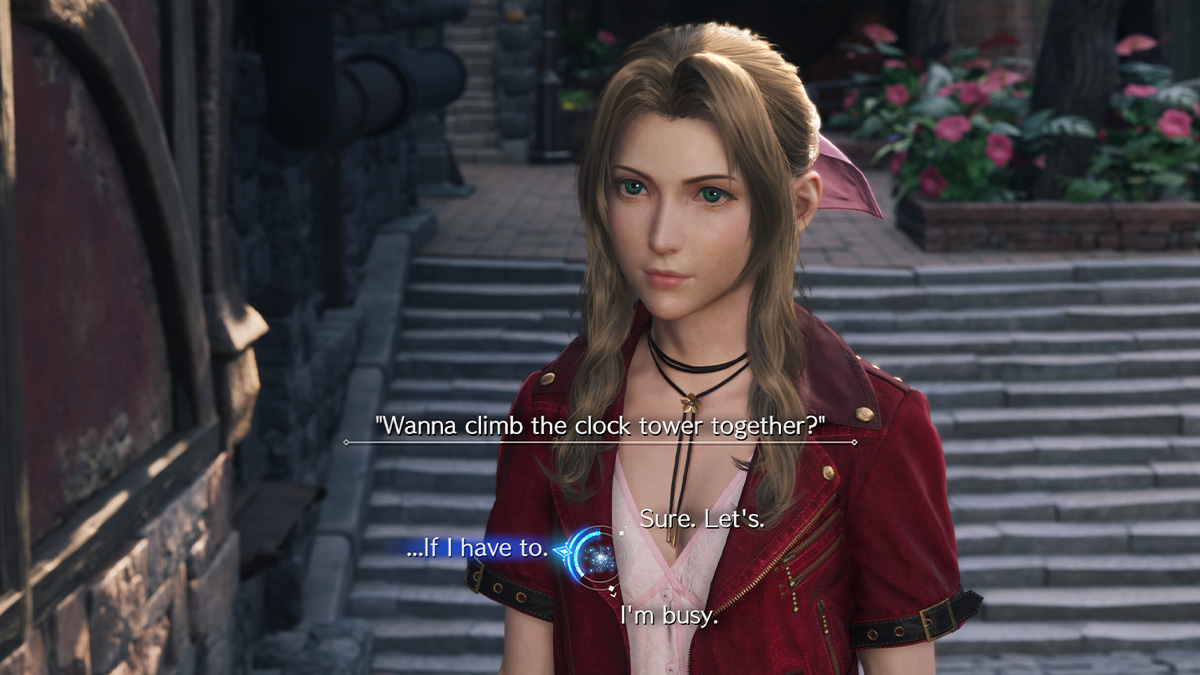
Perhaps the most surprising addition to Final Fantasy VII Rebirth that I encountered is a new relationship system that is, in a lot of ways, similar to the Social Link mechanic in the Persona series. Each character in the game now has an emotional status that I could view at any time. The feature allows the player to change how a character feels towards Cloud, which can become positive or negative based on your choices. An example is that while I was in the city of Kalm, I found Barret sitting in a bar alone and asked him if he wanted to drink with me. After initially saying no, a timed dialogue tree event was triggered, and I was given three choices. Because I chose to have Cloud offer to buy him a drink, my relationship with Barrett increased, and his feelings toward the protagonist became positive.
As I progressed through the story, there were many moments where I could interact with the characters and improve my relationship with them. If you like your Cloud to be a jerk, it is possible to be cold towards everyone and make decisions that upset them. However, the game has a relationship rank system that impacts the story in a few different ways. If you have a good relationship with certain characters, you can unlock side quests later in the story with them. Having a good bond with everyone also increases your overall party rank, which gives you access to new abilities and skills. I’m not sure if every character moment is optional, but how you react during them at least impacts how they feel about Cloud, which has larger ramifications on the overall game.
This new relationship system was probably my favorite part of the Final Fantasy VII Rebirth preview, as it fleshed out the characters in a really big way. Most importantly, it makes the world feel a lot less static as you can discover these dynamic moments through exploration. In Chapter 2, the game sets you free to explore the Kalm, which is a massive bustling town. Yes, I could have rushed to the main campaign mission marker and progressed the story. But the game’s side quests and social system had me wanting to explore every inch of the map to see what I could find. Because of this, the city truly felt alive, and like I could stumble upon something new with every corner I walked down.
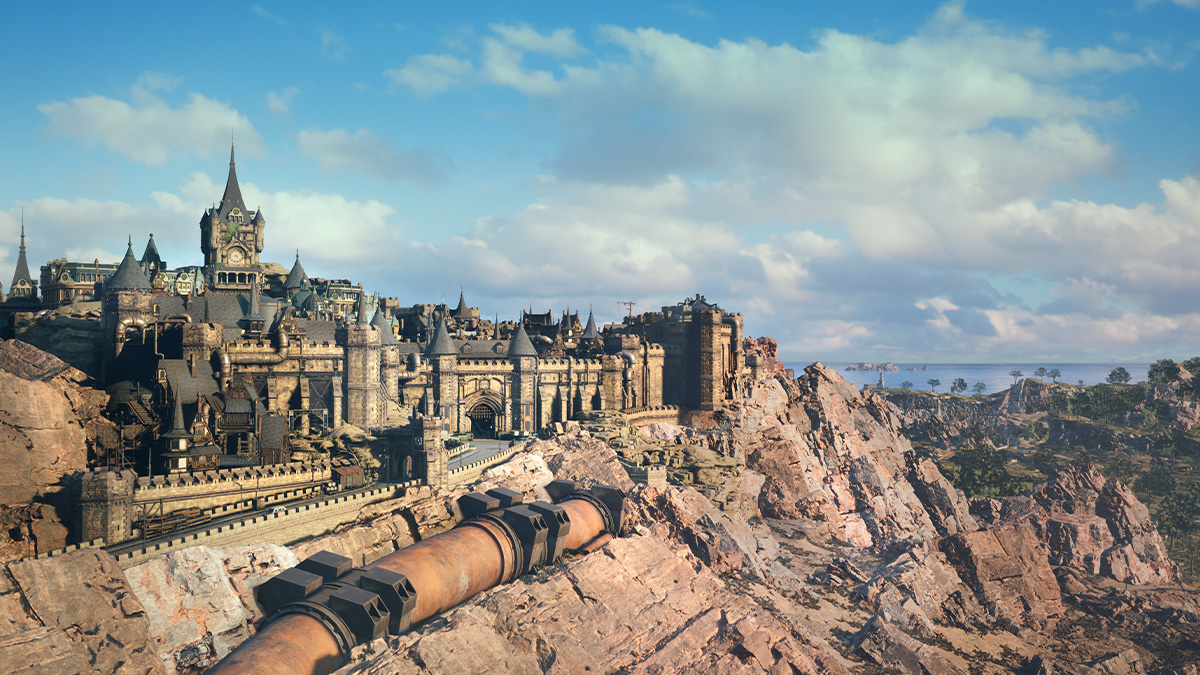
Witcher 3 fans that love Gwent will rejoice, as another major feature added to Final Fantasy VII Rebirth is a new card game called Queen’s Blood. The game is designed around a board with three lanes moving from left to right. In my play session, I had a deck of cards with various characters in. The way the game works is you have to place a card down that matches the rank level of the open spaces on your board. To start the match, you need to place a level 1 card down, as all the spaces start out at level 1. However, based on each card’s unique pattern, you can change the level of the other open spaces on your board. So, for example, a level 1 card might turn the space diagonal to it to rank 2, which then lets you put down a more powerful card. With each card you set down in your lane, its overall power ranking is higher.
The goal of Queen’s Blood is to have a higher total than your opponent. When every space on the board is filled up, the game will tally up each lane’s overall points and declare a winner. The game has a lot of depth and strategy, as certain characters in your deck can increase the ranking of your other cards already on the board. Like Gwent, you also unlock new cards by defeating opponents. What I really like about Queen’s Blood, though, is how it’s integrated into the game’s world. You can find NPCs who play the card game, and the more characters you beat, the higher your Queen’s Blood rank goes up, and the more opponents you gain access to.
Queen’s Blood could have just been another side activity, but Square Enix went the extra mile to really give the game personality. For instance, one of my first opponents was a guy named “Crybaby Ned.” The NPC literally bursts into tears and claims that the more he cries, the better he plays. The moment gave me flashbacks of being challenged by a trainer in a Pokemon game, which, I’m not gonna lie, is ridiculously awesome. Overall, Queen’s Blood is a lot of fun, and I could get lost for hours just playing the TCG. It’s easy enough to understand that anyone can jump in while being complex enough that veteran players who know a lot about card games will have much to sink their teeth into.
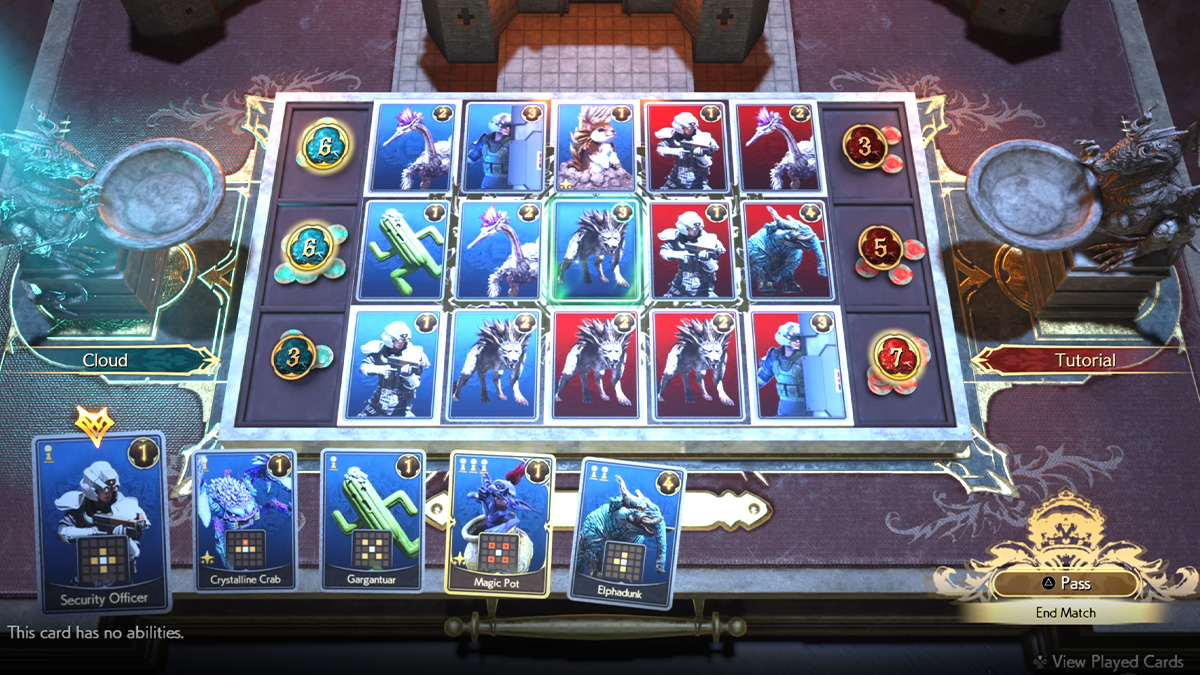
My preview of Final Fantasy VII Rebirth was the game’s first five hours, so my experience was split down the middle between two sections, which gives us an idea of what we can expect in the overall game. As I mentioned earlier, Chapter 1 is a flashback section with Cloud and Sephiroth. While the section is more similar to the linear sections in Final Fantasy VII Remake, the cinematic portions of the game feel a lot bigger. For example, before you take the trek up to the Mako reactor, Cloud can explore his hometown.
Nibelheim is big and incredibly detailed. Cloud can walk into homes, explore different sections of the town, and interact with various characters. But the environments are wide and gorgeously detailed even when the game funnels you into the more linear sections of climbing up the Mako reactor. The improved levels work much better with the game’s action-oriented combat, which feels less claustrophobic to Remake. For example, in the Operator Mode fighting stance, you can dodge and then launch into an aerial attack. Doing this sends Cloud hurling through the air, and you can zip around with sword slashes against enemies to juggle them. If you want to deliver more powerful attacks, you can use Punisher Mode to unleash slower sword slashes with a counterattack while blocking.
Again, anyone who played Remake will already know what I’m talking about. However, I can’t stress enough how much more fluid combat feels in Rebirth because of the little improvements. And while Intergrade technically already featured Synergy abilities, they are bursting with much more personality this go around. I won’t go on too much about the game’s opening section, as I already covered most of it in the Final Fantasy VII Rebirth TGS preview. However, what surprised me is how much of an emotional rollercoaster Chapter 1 is. While seeing the breakdown of Cloud’s relationship with Sephiroth was always expected to be heartbreaking, Square Enix uses the game’s opening section and the beginning of Chapter 2 to set up various plot points that are gearing up to be real tear-jerkers.
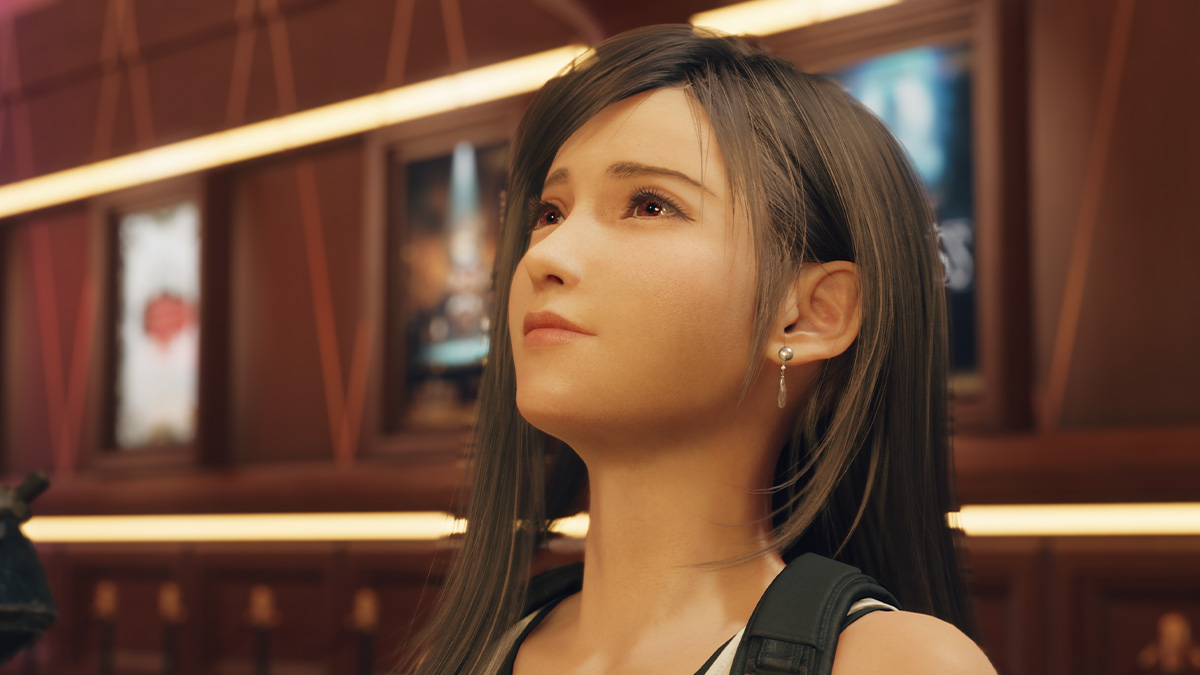
Without giving away too much, a scene between Cloud and Tifa was really intense emotionally and had me choking back tears. There are also a lot of character moments, such as Tifa giving Aerith a back rub and hilariously striking the wrong nerve, to Barret hanging on the edge of his seat like a little kid listening to a bedtime story as Cloud retells the origins of Sephiroth’s downfall. The character-building is a major step up in Rebirth, and the emotional stakes have never been higher. While Chapter 1 has more in common with the linear sections of Remake, its story feels much more cinematic.
It is Chapter 2, though, where I got to experience many of Final Fantasy VII Rebirth’s new features, as it’s where we first get access to the game’s open world. Even before stepping foot in the Grasslands, I explored the Kalm for an hour. The massive town is filled to the brim with life. From random musicians having a musical jam session to a romantic couple confessing their love on a bridge. While not every corner of the city leads to an activity or side quest, I really appreciated the detail they put into making Kalm feel like a living, breathing city.
My preview eventually transitioned to the Grasslands, which is the first major open-world section of the game. And it’s huge! My initial fear when Final Fantasy VII Rebirth was first announced is that it would suffer the empty-map problem that many modern open-world games suffer from. After all, it doesn’t matter how big and detailed your open world is if there isn’t actually anything to do in them. From what I played, at least, I can confirm this is not a problem in Final Fantasy VII Rebirth, as the game is packed with side content and quests.
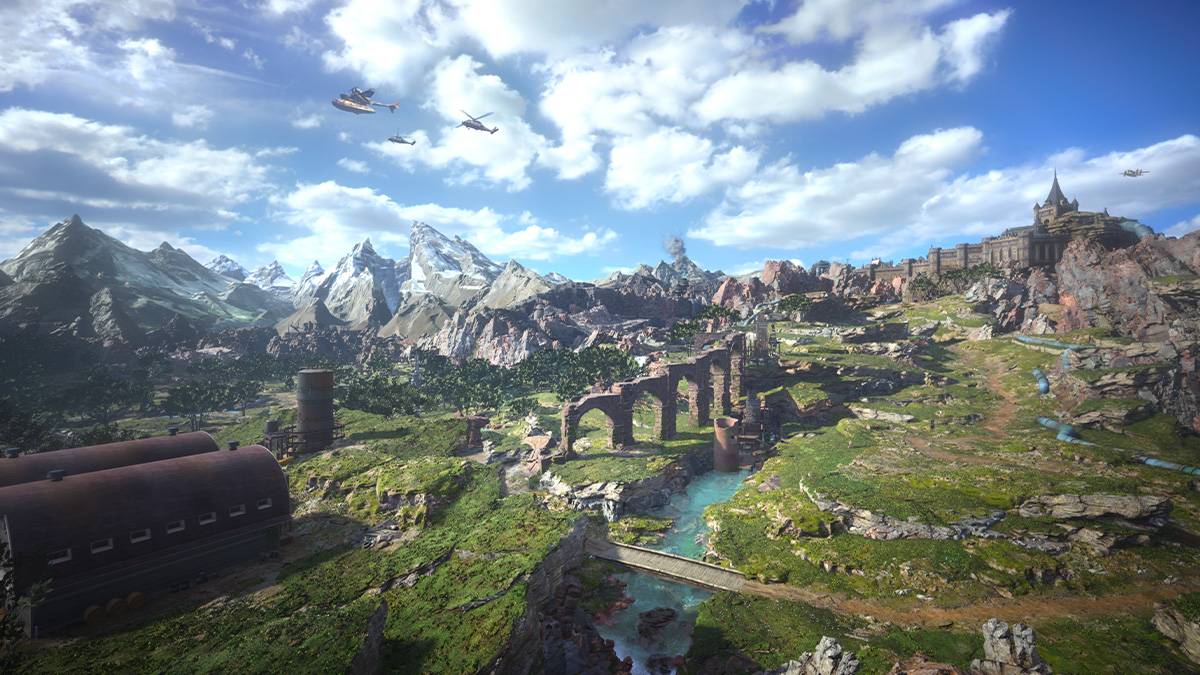
For starters, Chadley from Final Fantasy VII Remake returns, this time with an interesting twist. While the lovable NPC brings back the VR mechanic from Remake, he now has a new system called “Remnawave Towers,” spread across the map. Before you panic and think this sounds like the Ubisoft climb-a-tower mechanic, I think it’s handled better here. For starters, you don’t actually have to find these towers to unlock your map. It’s not mandatory. However, powering up these towers allows Chadley to learn more about enemies and the land, further unlocking new Materia and training. They also act as fast travel points, which is nifty.
Another quest Chadley now offers is Fiend Intel, reminiscent of the Bounty Hunts from Final Fantasy 15. As you explore the map, you will encounter special enemy bosses who have a countdown timer. Your goal is to defeat them within the limit while completing side objectives such as “Blocking” or “Staggering” an enemy. If you fail, you can revisit these spots and try as many times as you want. Finally, the most interesting thing Chadley offers is Phenomeon Intel, a multi-tiered encounter quest.
During my playthrough, I accidentally discovered a locked lighthouse that I had to break into. After finding my way into the area, I stumbled upon a group of pirates trying to hide a treasure. After a cutscene and defeating them in battle, they took off with the item, triggering a “Part 2” to the quest. I love the idea of having side quests with multiple parts and stories to them, as it gives you an incentive to zip around the map to uncover the next piece of the puzzle. While this isn’t revolutionary, it’s another example of how Final Fantasy VII Rebirth is going to great lengths to flesh out what could have been more simplified in other RPGs.
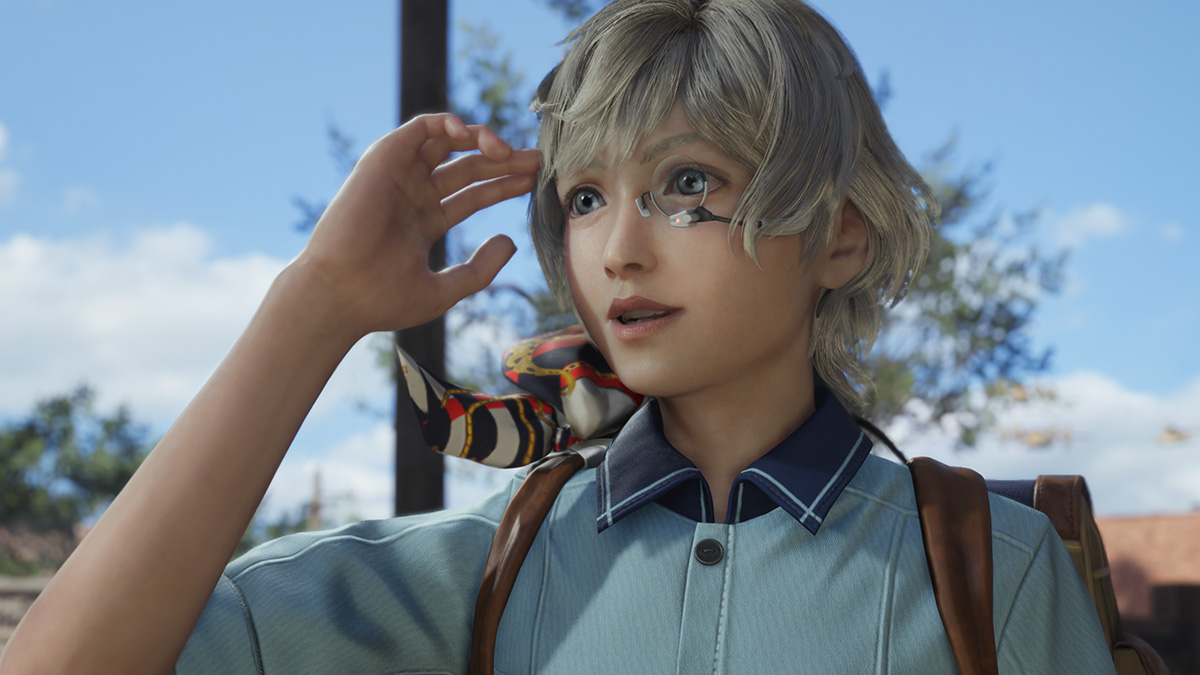
Even traversal is fleshed out in a fun way. Instead of unlocking your mount from a few dialogue prompts, you earn it through an interesting side story. After finding Bill’s Chocobo Ranch that is on the ropes financially (a major corporation is trying to bury this family-owned business), the farmhand asked me to track down a chocobo that had escaped. This led me to an adorable stealth mini-game, where I had to dive into bushes and crouch through a pack of chocobo without them seeing me. Finally, after throwing a rock in the distance to distract it, I could hop on the chocobo to make it my mount. From a mechanical point of view, it’s also really accessible that I can click a single button and immediately have Cloud and the gang riding their chocobo in seconds.
Speaking of adorable, chocobo have a lot more personality in this game compared to past releases. While riding on chocobo your mount will sometimes pick up on a smell. If you allow your pet to sniff around the area, it will trigger a treasure hunt. It’s up to you to read your chocobo’s body language, which can eventually lead you to a buried treasure if you figure out the right direction to run in. There are even little baby chocobo hidden throughout the map, and if you find them, they lead you to chocobo rest stops, which become fast travel points if Cloud fixes the broken signs.
One of my favorite features I experienced in the preview is the Transmuter device. After receiving it from Broden in Kalm, you can convert raw materials into items. While traversing the open-world section, I encountered a lot of raw material on the ground. Thankfully, Square Enix has made this fairly accessible, as you can automatically pick them up with a button press. You can even grab the items while riding your chocobo, so you can farm material as you sprint throughout the map. As you make more items like potions, your crafting rank levels up, giving you access to new crafting recipes. Again, you could just buy items from shops. But it’s nice having the option to craft since you will be spending a lot of time in these open-world sections anyway.
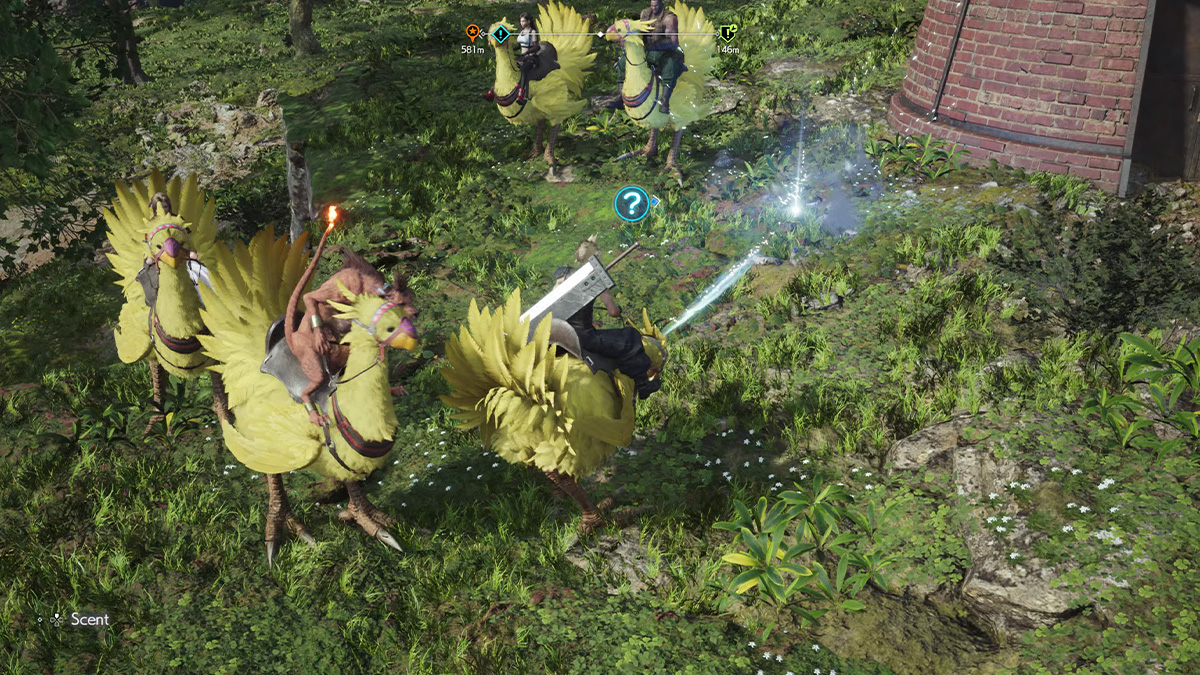
So overall, what do I take away from my preview of Final Fantasy VII Rebirth? I had to think a lot about this, as the first five hours of the game were seriously packed with content and features that were almost overwhelming (in a good way). As someone who picked up Final Fantasy VII in 1998, I am truly blown away by how much Square Enix has fleshed out these beloved characters. I think what has stayed with me the most since I played the first five hours is how much I already care about Cloud’s relationships with the rest of the cast. More than anything else, I want to jump back into the game to see how these relationships change over the course of the story.
From a purely mechanical point of view, however, I also think Final Fantasy VII Rebirth nails the open-world design. I think most fans will be really pleased with the balance they found with this game in terms of the RPG features, combat mechanics, and item crafting. Even more than Remake, Final Fantasy VII Rebirth truly captures the magic and the spirit of the classic PlayStation One title. I can’t wait to dive back into the title and see if the level of detail and scope that I saw in the first five hours is consistent throughout the entire campaign. And I’m also interested to see how they balance the more cinematic chapters which are more linear. If the Nibelheim section is anything to go by, I think we are looking at what could be one of Square Enix’s best games in years.
Final Fantasy VII Rebirth will be released on PlayStation 5 on February 29, 2024.


Published: Feb 6, 2024 07:01 pm